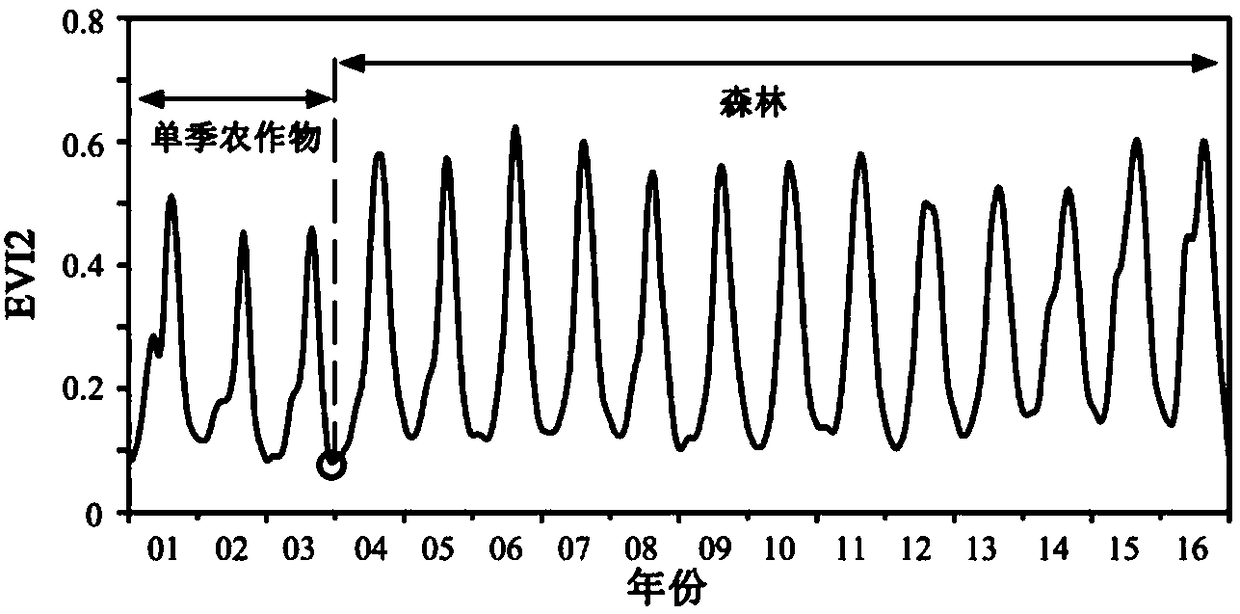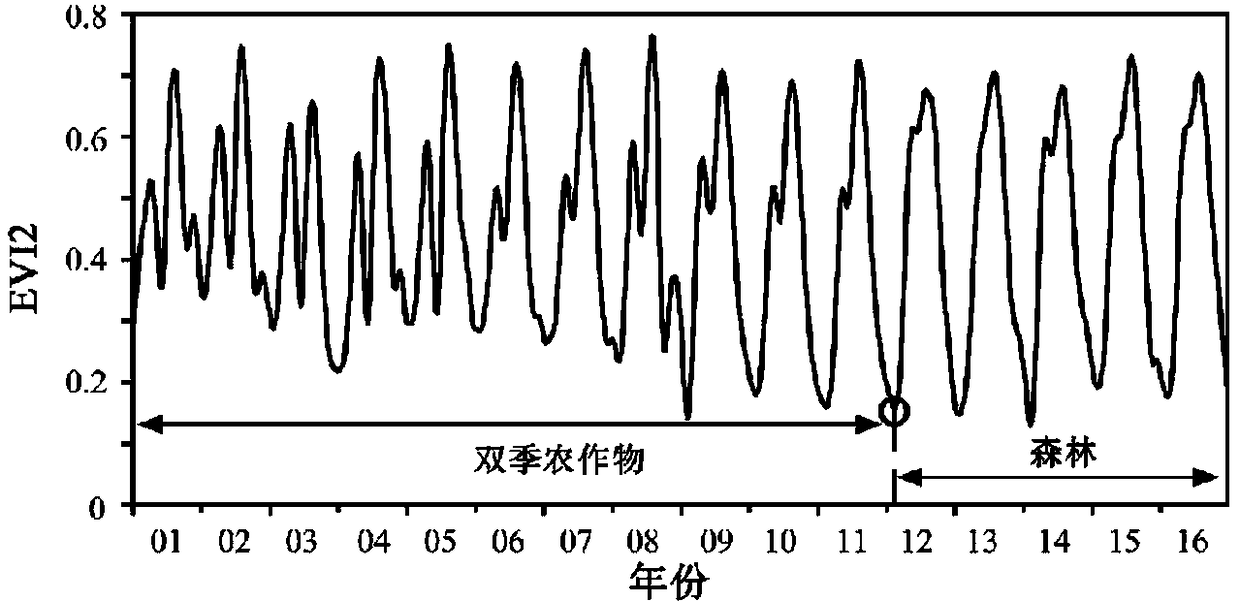Multi-time sequence index change trend-based automatic grain for green recognition method
An automatic identification and change trend technology, applied in the field of remote sensing information processing, can solve the problems of misclassification or omission, difficulty in ensuring the accuracy of land cover mapping, and small land cover change area, achieve good fault tolerance, and realize automatic identification of returning farmland to forest. , good flexibility and scalability
- Summary
- Abstract
- Description
- Claims
- Application Information
AI Technical Summary
Problems solved by technology
Method used
Image
Examples
Embodiment Construction
[0041] The technical solution of the present invention will be specifically described below in conjunction with the accompanying drawings.
[0042] The present invention provides an automatic identification method for returning farmland to forest based on the changing trend of multi-time series indicators, such as figure 1 Shown: Firstly, a multi-year daily enhanced vegetation index time series data set is established for each grid unit in the study area, and then based on the enhanced vegetation index time series data, the abundance, time series dispersion, growth season length, and high score are extracted year by year. Five time-series indicators of bit persistence and low-level persistence, and detect the multi-year change trends of the above five time-series indicators one by one pixel by pixel. On this basis, based on the change trends of the five time-series indicators, an automatic identification flow chart for returning farmland to forest , and finally achieve the go...
PUM
 Login to View More
Login to View More Abstract
Description
Claims
Application Information
 Login to View More
Login to View More - R&D
- Intellectual Property
- Life Sciences
- Materials
- Tech Scout
- Unparalleled Data Quality
- Higher Quality Content
- 60% Fewer Hallucinations
Browse by: Latest US Patents, China's latest patents, Technical Efficacy Thesaurus, Application Domain, Technology Topic, Popular Technical Reports.
© 2025 PatSnap. All rights reserved.Legal|Privacy policy|Modern Slavery Act Transparency Statement|Sitemap|About US| Contact US: help@patsnap.com



